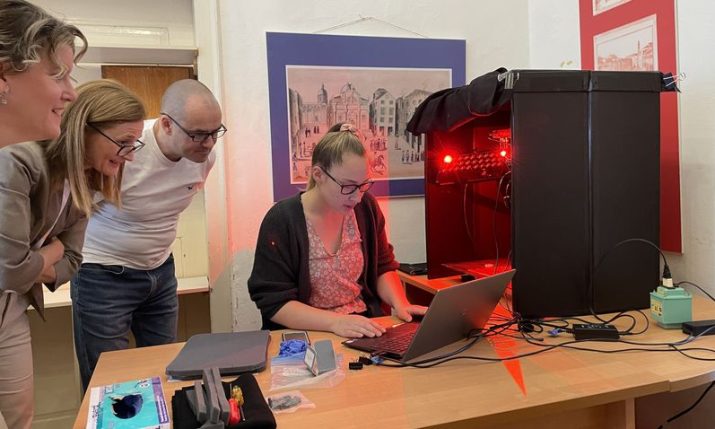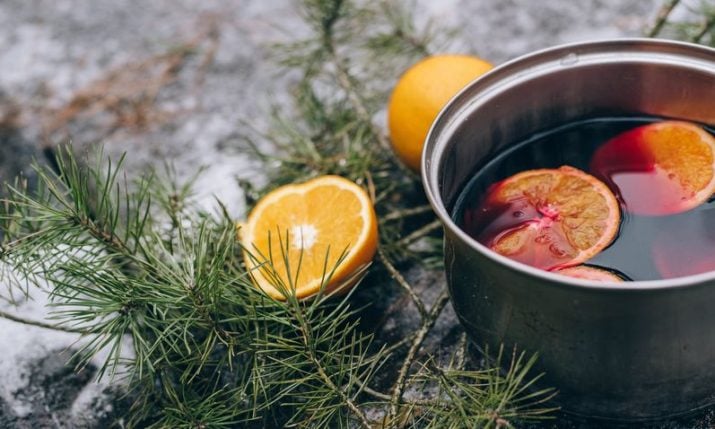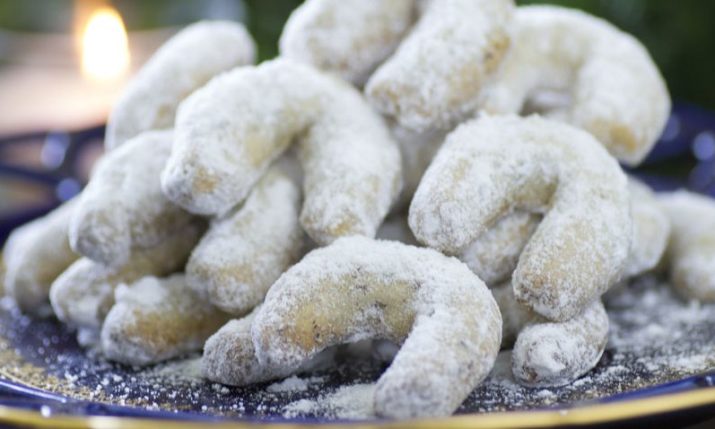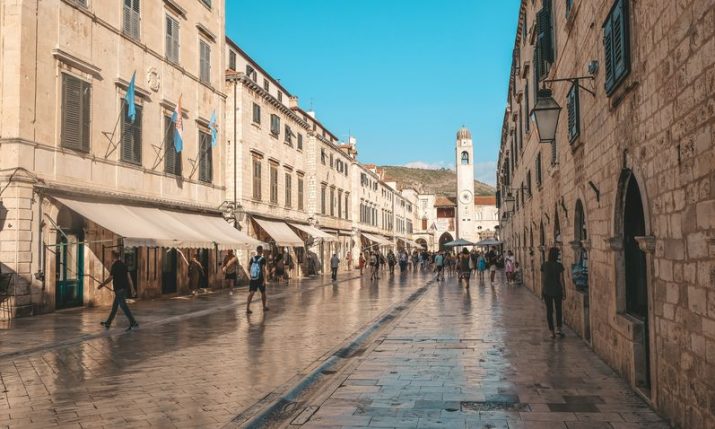City of Citruses, Rose Petals, and Spices
- by croatiaweek
- in Food & Wine
The set for the Game of Thrones series and, occasionally, a Bollywood flick, the city of Dubrovnik loves nuanced sweet flavours…
by Lora Tomas
In a blend of Italian and English, Kate Skance is offering her homemade arancini – candied orange rind, which shares the name with the deep-fried Italian rice ball – to customers stopping by her stall at Dubrovnik’s green market. Unexpectedly mellow, the fragile strips dissolve quickly in my mouth, leaving a tangy aftertaste. I go for dried figs next. Their powdery surface gives way to crunchy seeds, releasing the stored sugar in a rush. Sugar roasted almonds are bittersweet and hard under teeth. “I’ve been tampering with tradition a bit, adding chocolate powder into the mix,” Kate Skance says sotto voce, as if letting me in on a mildly embarrassing secret.
“A more serious cultivation of figs began with the Greeks landing in Dalmatia. It is possible that the Greeks have also spread the ways of processing them,” says Jadranka Ničetić, the author of the extensive cookbook Traditional Taste of Dubrovnik. “But the first mention of oranges at Dubrovnik market goes back to the 13th ct. Dubrovnik sailors and merchants probably brought the first orange trees from their voyages, along with the Indian and other spices which we now use to make a lot of traditional desserts, like mantala, for example. Mantala is a type of cake made of young wine, rough-ground wheat flour, almonds, lemon rind, cinnamon, cloves, and ground muscat nut.”
At another stall, Dado Sardi, who runs a family food manufacturing business with his wife Nina, sells their vegetarian fig salami, a traditional Dubrovnik sweet. It is made of ground almonds and dried figs soaked in fig liqueur, and, alternatively, tinged with orange rind, dried tomatoes or chili peppers. The salami is traditionally served with raki and young cheese. Or, if the occasion calls for it, melted chocolate.
Sardi’s old house overlooks the square. During Dubrovnik’s annual Summer Festivals, he says, actors in Marin Držić’s plays would use its entrance to prepare for performances that would take place right where his stall now is, under the statue of another famous city poet, Ivan Gundulić. Not a bad way for citizens to acquire a taste for theatre. And a perfect spot for the playwright who loved a good food pun as much as he loved food (to borrow the words of Dubrovnik author Slavica Stojan).
All sorts of liqueurs, drunk as aperitifs or with desserts, line the neighbouring stand: cherry, carob, loquat, grapes, strawberry, pear, olive, mint, almond, rose hip, or apricot, varying in their degree of sweetness. The girl behind the stall hands me a plastic coffee spoon of rich bitter orange marmalade. “Rose marmalade should be administered in measured-out quantities only,” she says, extending another spoon. Its perfumed intensity is somewhat lightened by the sourness of lemons.
Tucked away in one of the narrow streets parallel to the city’s main thoroughfare, Stradun, pâtisserie Pupica, with its newspaper rack and cats lazing next to the colorful flower pots, is a great spot for breakfast, or coffee and cakes in the afternoon. We order macchiatos and the traditional Ragusa cake: chocolate glazed, grainy dough enriched with almonds and walnuts, filling but not saccharine. “It’s our old family recipe,” says Nikolina Farčić, Pupica’s co-owner. “We add lemon rind and juice in the half that contains the walnuts, and orange rind and juice with almonds in the other half. Most of these southern cakes contain citrus fruits in some form. This and many other recipes were probably developed by nuns in the city’s monasteries during the Renaissance,” she adds.
But if you’re up for a different type of dessert, you don’t have to go too far from Pupica. The taste of bitter orange ice cream in Dolce Vita – a cake and ice cream shop in one of the streets branching off from Stradun – first takes you by surprise, but then you start looking forward to a filament or a lump of orange rind coated in a thin layer of marmalade surfacing from beneath the crusty chocolate topping. “I wanted to recreate a traditional Dubrovnik taste in an ice cream,” says Alisa Nenadić, the owner of Dolce Vita. “Then I came up with this combination: bitter orange marmalade mixed into the white base. Bitter oranges come from our own or friends’ and neighbours’ gardens. Since we began producing this ice cream two years ago, it’s become an absolute hit. Once a crate of 50 kilos of bitter oranges appeared in front of our door, with a note from a gentleman from the nearby island of Lopud. It read that he didn’t know what to do with them. This way, he was certain he could enjoy his favourite ice cream whenever he visits the city.”
On our last day in Dubrovnik, a friend indulged us with the traditional, caramely dessert rozata – custard made of eggs, milk, sugar, and drowned in rose liqueur. It retained the shape of the mould on the plate: a wobbly Gothic rose window in miniature. “Rozata was traditionally served in elegant bowls, actually slightly concave-bottom plates, so that the caramel sauce it releases wouldn’t trickle away,” explains Ničetić. “Although this egg dessert is known throughout the Mediterranean, rose liqueur defines, and gives name to Dubrovnik rozata,” she adds.
While some of Dubrovnik’s desserts map the history of the city’s spice trade and maritime exploration, along with liqueurs, they also reiterate its constant hunt after flavour. Here, buds are nipped, flowers depetalled, fruit and flower essences extracted to be infused into something else. And citruses have, somehow, managed to permeate just about everything.
Where to eat & shop in Dubrovnik:
GREEN MARKET at Gundulić Square is open every day from 7 a.m. to 1 p.m., with tourists and locals jostling around food and souvenir stalls during the summer’.
KAMENICE is a popular, easy-on-the-pocket place for all kinds of fresh seafood and local wine. Try squid ink risotto or mussels à la buzara. Gundulić Square 8.
KOPUN is just up the wide staircase from the green market, with tables on a secluded piazza, facing the lavish Baroque Church of St Ignatius. Known for a delicious rozata, and their capon prepared by following a 16th-century Dubrovnik recipe (meat sweetened with dried figs, apricots, raisins, and honey). Ruđer Bošković Square 7. http://restaurantkopun.com/
PANTARUL offers traditional tastes with a modern twist. It’s a ten minutes’ drive from the Old City, and was co-started only a year ago by one of the first food bloggers in Croatia, Ana-Marija Bujić, also the author of a cutting-edge book of stories and recipies What’s Cooking in Dubrovnik. Kralja Tomislava 1, Lapad. http://www.pantarul.com/
PUPICA patisserie is an ideal spot for breakfast, or excellent coffee and traditional Dubrovnik cakes at any time of day. Cvijete Zuzorić bb.
DOLCE VITA is a place to go for imaginative high-calorie pancakes, tiramisus and their signature bitter orange ice cream. Nalješkovićeva 1a.
Shops like UJE and TERRA CROATICA, selling all sorts of ready-to-be-gift-wrapped food products and traditional cookbooks can be found in Ulica od Puča, a street extending from Gundulić Square.














